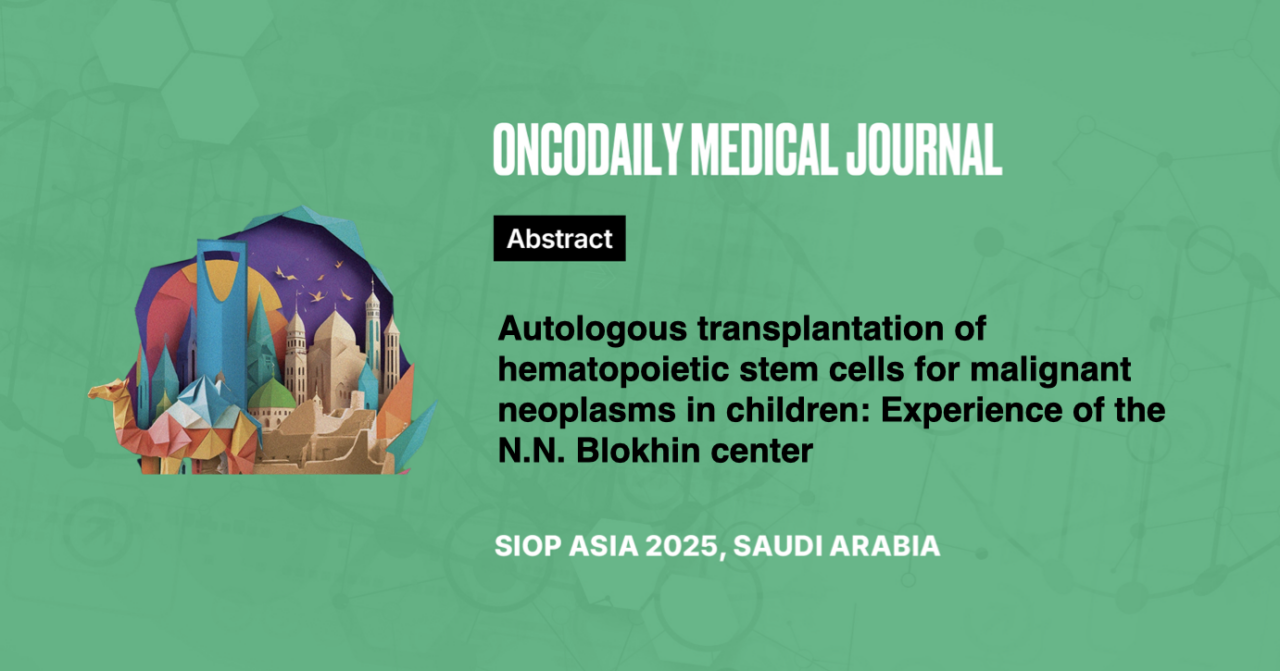Autologous transplantation of hematopoietic stem cells for malignant neoplasms in children: Experience of the N.N. Blokhin center
Abstract
Introduction: Autologous hematopoietic stem cell transplantation (HSCT) is a method of consolidation therapy in childhood cancer. One of the important aspects is to improve the results with less toxicity to organs. Large groups of patients require analysis. We aimed to present the experience of HSCT in children with malignancies in our center and to evaluate the method’s safety and tolerability.
Methodology: A total of 560 patients received HSCT in 2017-2024 (for 7 years). Diagnosis: Hodgkin’s disease (HD), non-Hodgkin’s lymphoma (NHL), neuroblastoma (NB), Wilms tumor (WT), germ cell tumor (GCT), Ewing’s sarcoma (ES), retinoblastoma (RB), pleuropulmonary blastoma (PPB), sialoblastoma (SB), hepatoma (HB) and CNS tumors. HD/NHL – 35 points, NB – 364 points, WT – 33 points, GCT – 24 points, ES – 83 points, RB – 9 points, PPB – 1 point, SB – 1 point, GB – 1 point, CNS – 9 points. M/F=324/236. Median age – 8 years 7 months (9 months – 17 years 8 months).
Conditioning regimens: HD/NHL – CEAM, ES – Treo/Mel, NB – Treo/Mel + Treo/Mel/Tio, GCT – based on MAKEI with thiotepa (tandem aHSCT), WT – melphalan, PPB – threo/mel, GB – Eto/Carbo, SB/RB/CNS – thiotepa-based regimens. The median CD34+ reinfusion provides 8.3×10^6 /kg (1.9 – 36) cells.
Results: All patients engrafted. The median day of engraftment is 11 (7-19). With an average follow-up of 3.4 years (from 1 month to 6.9 years), OS for all groups increased to 89.3%, EFS – 7.4%. The main cause of death was relapse/progression. TRM was very low, only 6 patients died due to toxicity of therapy. The main toxicities: oral mucositis 2-4 gr. was detected in 78.3% of patients, febrile neutropenia – 84.6%, enterocolitis 2-4 gr. – 44.7%, toxicoderma 2-4 gr. – 41.4%.
Conclusion: AHSCT in children with malignant diseases is a good option for consolidation therapy. Toxicity and TRM are extremely viable. Long-term follow-up is required.





